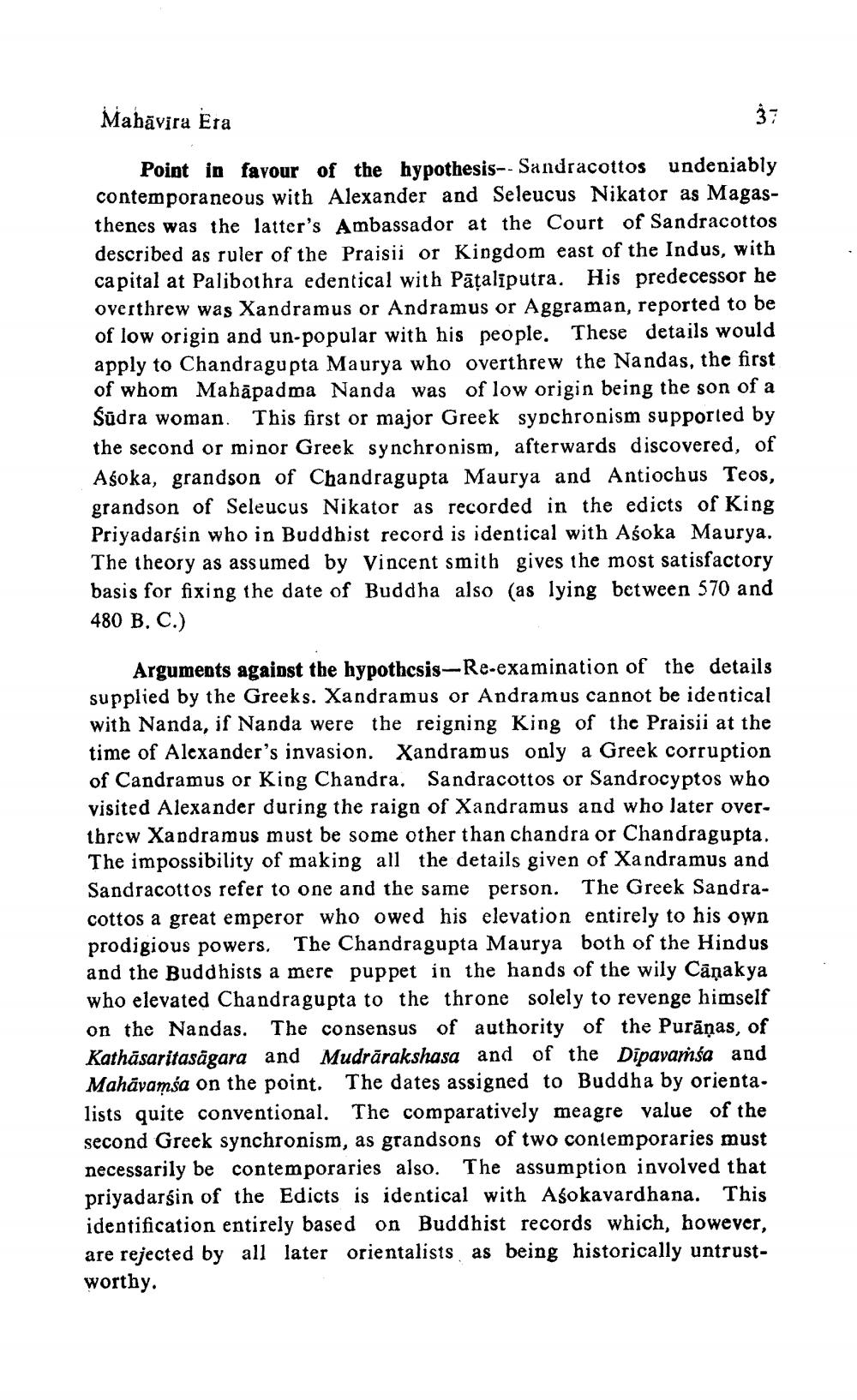________________
Mahāvira Era
37
Point in favour of the hypothesis-- Sandracottos undeniably contemporaneous with Alexander and Seleucus Nikator as Magasthenes was the latter's Ambassador at the Court of Sandracottos described as ruler of the Praisii or Kingdom east of the Indus, with capital at Palibothra edentical with Pataliputra. His predecessor he overthrew was Xandramus or Andramus or Aggraman, reported to be of low origin and un-popular with his people. These details would apply to Chandragupta Maurya who overthrew the Nandas, the first of whom Mahāpadma Nanda was of low origin being the son of a Sūdra woman. This first or major Greek synchronism supported by the second or minor Greek synchronism, afterwards discovered, of Asoka, grandson of Chandragupta Maurya and Antiochus Teos, grandson of Seleucus Nikator as recorded in the edicts of King Priyadarsin who in Buddhist record is identical with Aśoka Maurya. The theory as assumed by Vincent smith gives the most satisfactory basis for fixing the date of Buddha also (as lying between 570 and 480 B. C.)
Arguments against the hypothcsis-Re-examination of the details supplied by the Greeks. Xandramus or Andramus cannot be identical with Nanda, if Nanda were the reigning King of the Praisii at the time of Alexander's invasion. Xandramus only a Greek corruption of Candramus or King Chandra, Sandracottos or Sandrocyptos who visited Alexander during the raign of Xandramus and who later over. threw Xandramus must be some other than chandra or Chandragupta. The impossibility of making all the details given of Xandramus and Sandracottos refer to one and the same person. The Greek Sandracottos a great emperor who owed his elevation entirely to his own prodigious powers. The Chandragupta Maurya both of the Hindus and the Buddhists a mere puppet in the hands of the wily Cânakya who elevated Chandragupta to the throne solely to revenge himself on the Nandas. The consensus of authority of the Purānas, of Kathäsaritasāgara and Mudrārakshasa and of the Dipavaṁsa and Mahāvamša on the point. The dates assigned to Buddha by orienta. lists quite conventional. The comparatively meagre value of the second Greek synchronism, as grandsons of two contemporaries must necessarily be contemporaries also. The assumption involved that priyadarsin of the Edicts is identical with Asokavardhana. This identification entirely based on Buddhist records which, however, are rejected by all later orientalists, as being historically untrustworthy.




